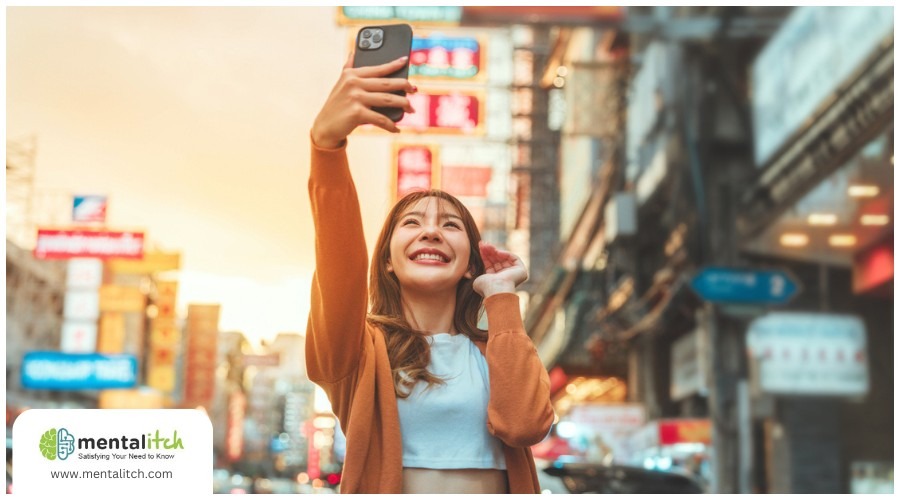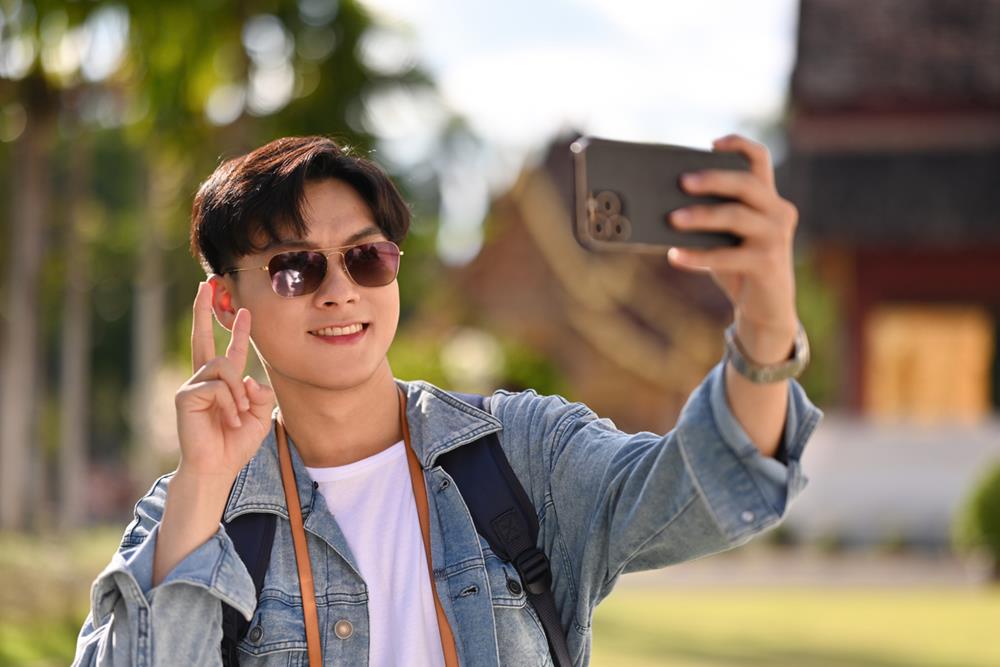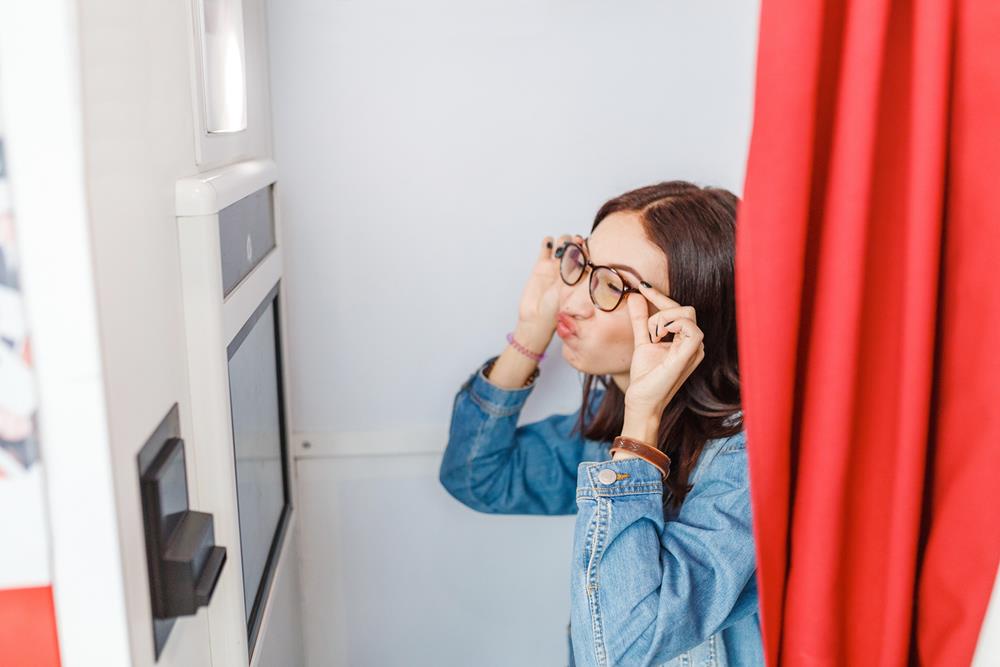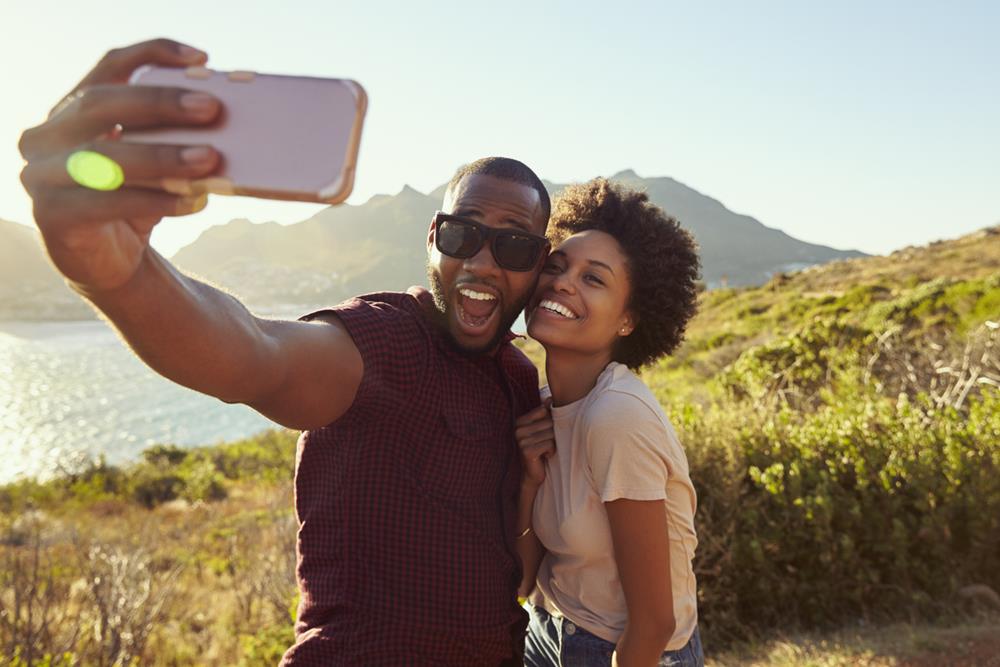Today, the term “selfie” is widely known across all age groups. Kids recognize it, teens are very familiar with it, and even seniors have an idea of what it means. A selfie refers to a photography technique where the camera lens is pointed at the photographer. While often taken solo, selfies can also include others, sometimes called “groufies” or “group selfies.”
The evolution of selfies has turned them into a tool for personal expression and a way to leave a mark online, as seen in the abundance of selfies on social media apps like Facebook and Instagram. So, how did selfies become popular? Where did it all start? Let’s take a closer look at selfies and their impact on pop culture.
The Origins of the Selfie
The selfie dates back to 1839 when American photographer Robert Cornelius created a daguerreotype (an early photo) of himself. This was one of the first selfies ever taken. Since taking a daguerreotype was a slow process, Cornelius had time to run into the shot. On the back, he wrote, “The first light picture ever taken. 1839.”
One of the first teenagers to take her own picture using a mirror was Grand Duchess Anastasia Nikolaevna of Russia, the youngest daughter of Tsar Nicholas II. She took a picture when she was 13 years old and sent it with a letter to a friend in 1914. In the letter, Anastasia wrote that she had taken the picture of herself looking at the mirror, as it was very hard to take it since her hands were trembling.
In 1934, a Swedish couple used a wooden stick to activate a camera from a distance and take a picture of themselves. This stick can be considered the “original selfie stick.”
Where Did the Term “Selfie” Come From?
Though taking photos of oneself dates back to the 1830s, the term “selfie” became popular only in the mid-2000s. The first known use of “selfie” appeared in an Australian internet forum called “Karl Kruszelnicki’s ‘Dr. Karl Self-Serve Science Forum.” A man named Nathan Hope used the term in a post but claimed he did not coin it, stating it was already common slang in Australia.
By the early 2010s, “selfie” was widely used not only in Australia but also globally. In 2013, the Oxford English Dictionary added “selfie” as an official word. Later that year, the Oxford English Dictionary announced “selfie” as the word of the year and confirmed Australia as its origin.
The Japanese Selfie Culture
While Australia coined the term “selfie,” Japan popularized the selfie culture. In the 1990s, Japanese schoolgirls used portable cameras to take pictures of themselves and share them with friends. This trend inspired photographer Hiromi Toshikawa, known as Hiromix, to publish the photo diary album “Seventeen Girl Days,” featuring self-posing photos of young women.
The popularity of self-posing photos in Japan during the late 1980s and 1990s led to innovations in camera technology. In 1983, the Minolta Disc-7 camera, with its front convex mirror, made self-portraits easier.
Another notable invention was the “camera stick,” featured in the 1995 book “101 Un-Useless Japanese Inventions.” This stick allowed for wider self-portraits, including friends or scenic backgrounds. Though initially deemed a “useless invention,” the selfie stick became a must-have accessory in the 21st century.
Japanese Purikura
The rise of self-photos in Japan was boosted by purikura booths. Purikura, photo sticker booths, first appeared in arcades in the 1990s. These booths allowed people to take selfies, edit them with cute designs, and print them as stickers.
Game designer Sasaki Miho created the purikura booth in 1994. Inspired by the popularity of girl photo culture, where schoolgirls decorated self-photos with stickers, Miho pitched the idea to her employer, Atlus. Initially rejected by her male bosses, Miho’s concept was eventually approved, and she partnered with Sega to produce the booth.
Sega and Atlus released the Print Club (Purinto Kurabu) booth in February 1995. Initially placed in arcades, the booths became so popular that they expanded to train stations, karaoke spots, bowling alleys, and fast-food restaurants. The success of these booths led other companies to create their own photo sticker booths, cementing purikura’s place in Japanese culture.
Mobile Phones with Front-Facing Cameras
Japan pioneered the development of mobile devices with front-facing cameras. The first handheld device with this feature was the Game Boy Camera, an accessory for the Nintendo Game Boy. This camera could swivel 180 degrees, allowing users to take selfies. Nintendo marketed it as a tool for self-portraits, which users could incorporate into various games built into the accessory.
The first front-facing camera phone was the Kyocera Visual Phone VP-210, released in May 1999 in Japan. It had enough memory to store up to 20 JPEG images, which could be sent via email or Japan’s wireless network, Personal Handy-phone System (PHS). The introduction of mobile phones with front-facing cameras shifted Japanese photo culture from purikura booths to camera phones, making selfies more accessible and widespread.
The International Popularity of Selfies
Selfies have become a global phenomenon, driven by social media, celebrity influence, and technological advancements. From boosting self-esteem to influencing travel habits, selfies play a significant role in modern culture. Here’s a look at how selfies have gained international popularity and their impact on society.
- Social Media Explosion: Platforms like Facebook, Instagram, Snapchat, and TikTok have made sharing selfies easy and popular. Hashtags like #selfie and #selfietime have millions of posts.
- Celebrity Influence: Celebrities often post selfies, influencing fans to do the same. Famous selfies, like Ellen DeGeneres’s Oscar selfie, have gone viral, garnering millions of shares and likes.
- Technological Advancements: Improved smartphone cameras with higher resolutions and features like portrait mode have made taking high-quality selfies easier. Front-facing cameras and apps with filters and editing tools enhance the selfie experience.
- Cultural Impact: Selfies have become a form of self-expression and identity. They are used to document personal milestones, daily activities, and social events.
- Tourism and Travel: Tourists take selfies at landmarks, creating digital travel diaries. Selfie sticks and other accessories have become common among travelers.
- Marketing and Branding: Brands use selfies in marketing campaigns to engage with consumers. Influencers and content creators leverage selfies to build personal brands and connect with audiences.
- Psychological Aspects: Selfies can boost self-esteem and confidence by allowing people to present their best selves. They also play a role in social validation, with likes and comments providing instant feedback.
- Global Trends: The selfie trend is not limited to Western cultures; it has become a global phenomenon. Different countries have their unique takes on selfie culture, influenced by local customs and technology.
- Events and Challenges: Selfie-related events, such as National Selfie Day, promote the culture worldwide. Viral challenges, like the Ice Bucket Challenge, often include selfie videos to raise awareness and participation.
- Criticism and Controversy: Selfies have been criticized for promoting narcissism and superficiality. Issues like privacy, safety, and the impact on mental health are ongoing concerns.
Conclusion
Selfies have transformed from simple self-portraits to a powerful force in pop culture. They influence fashion, travel, social interactions, and even technology. By allowing individuals to express themselves and connect with others worldwide, selfies have become an integral part of our daily lives and continue to shape modern society.
Additional Notes
- ExpressVPN’s research revealed that 93 million selfies are taken each day worldwide, and Gen Z takes more selfies than any other generation.
- The popularity of self-photos has further increased due to the creation and abundance of purikura booths in Japan.
- Many believe that the first hand-held device that had a front-facing camera was the Game Boy Camera, an accessory that can be attached to a Nintendo Game Boy portable gaming console.





